|
TennisOne Lessons Inside-out and inside-in: A Tale of Two Forehands Dave Smith TennisOne Senior Editor
If there is one strategic stroke pattern that can define the modern game, one could argue that the ability to hit more effective inside-out forehands has become the ‘staple’ stroke for the new millennium. It isn’t that the inside-out forehand is necessarily hit as a winner. (Certainly, from some offensive positions inside the baseline, the inside out forehand can—and often is—hit as a winner!) However, the ability to hit with significant angle from the ad court (for right-handers) to an opponent’s backhand (also a right-handed assumption), opens the door for the inside-in forehand for a winner. And, because of the position of the player hitting the inside-out/inside-in forehand, as well as the shot characteristics, these two shots don’t put the player in as precarious position as other shots hit from similar positions. Because there may be some confusion for many recreational players as to just what an ‘inside-out’ and an ‘inside-in’ forehand is, let me define and describe these two shots.
Inside-Out The inside-out shot refers to a ball that is struck from the ‘inside’ or interior portion of the court, (relative to the player hitting the ball) and directing this shot crosscourt to the ad court of his opponent. That is, a right-handed player is going to hit a forehand from the ad side of his own court crosscourt to the ad side of his opponent. Inside-In Taking this same inside ball, the player pulls the ball down the line to the deuce side of the court. $10,000 Shot Hank Pfister, a fellow USPTA speaker and former top-ten world-ranked player, coined this term a number of years ago. I liked the concept and feel it can help many players as they develop. I hope I can do it justice and relate it at least half as well as Hank did when I heard him talk about it. The idea is this: what baseline position would you look for to set up a point or finish a point if $10,000 was riding on the rally? This place is located along the baseline near the singles side line and about three-quarters of the distance to the center service mark on the baseline (for right-handed players). Preferably, you will want to try and take the ball inside the baseline if possible as this can add angle to the inside-out shot as well as set up the inside-in ball for a winner. From this ‘$10,000’ area, a player can run around the backhand and hit the forehand either crosscourt (inside-out) or down the line (inside-in) with a relative amount of safety as well as creating a very offensive shot on the player’s strong side.
While the discussion of the various inside-out and inside-in forehands could encompass many pages of text, there are a couple technical issues that I would like you to consider when working with these shots. Inside-out: When working the inside out forehand, using a more significant grip can prove essential. The the western grip lays the racquet back significantly more than the eastern or semi-western grip. This initial position of the racquet allows a player to drive up and through the ball with significant power while maintaining the desired racquet face for the inside out. It is important that players keep the wrist locked, especially using the double bend position. (Please see my last newsletter on the double-bend.) Using an open stance, the player can lead heavily with the hand and hit the ball with the racquet head slightly back. This position can increase the inside-out effectiveness of the shot as well as set up for the inside-in forehand for a winner on the subsequent forehand from the same position. Inside-in: The player will want to make contact much earlier so the racquet head catches up to the hitting hand without using the wrist. That is, you will want to feel the tip of the racquet getting out around the outside of the ball, but, be careful not to whip the racquet around by flicking the wrist. Hitting the ball early will allow you to hit not only topspin, but a little side spin where the ball curves from right to left when hit by a right-handed player. This added spin makes the shot so very effective. Strategic Concepts As many of you have learned in previous articles, strategically, you will want to keep most baseline groundstrokes crosscourt. Players who hit down the line at the wrong time find themselves usually running all over the court. There are several reasons for this situation to occur, however, I will save such strategy concepts for a future article. The thing you will want to know is that if you are pressed to hit a backhand on your ad court, you will want to take your backhand crosscourt, especially if you are pulled outside the singles sideline. However, if you can hit a ball in the ‘$10,000’ range, you have a couple of offensive options.
Because the inside-in forehand can be hit from inside the singles side line, the shot isn’t as low-percentage as a player hitting a backhand down the line. This is because the forehand can be hit more towards the middle of their opponent’s court; yet have the ball curve back out wide towards the singles side line. (When hit around the outside of the ball.)
Ideally, one will want to take the inside-in ball from inside the baseline. From there, the ball can be hit effectively inside-out or inside-in. Many players center their entire singles strategy on these two shot choices. That is, they will keep most balls crosscourt until their opponent hits a short ball in the $10,000 range. Players, who have developed a powerful, aggressive forehand, can wait for this shot and parlay one of these two shots, or use one to set up the other. In addition, you will see pros hit the drop shot from this same position, especially when they can set up the forehand more inside the baseline. Because opponents have seen the inside-out and inside-in aggressive forehands, they tend to play even further back to give them time to run down each of these shots. Thus, a drop shot can be very effective hit to either side of the court. Fudging When a professional hits an effective crosscourt, you will notice that they don’t return to the center of their baseline. They ‘fudge’ over, staying on the side of the court they just hit from. This is because of two elements. The first point: Any opponent’s shot down the line will be a low-percentage shot since the ball has to go over the highest part of the net; it will travel over mostly out of bounds area, (over the alley in most cases), and the landing area is very small for such a down the line to be a winner. See diagram below:
In addition to the fact that the down-the-line is a low percentage shot, the ball tends to draw toward the middle of the court. This gives player “A” a good opportunity to run down the ball. As a right-handed player, “A” will have a forehand to hit crosscourt…often times for a winner from this position. The second advantage of fudging is that it sets up the player for the inside-out, inside-in shot opportunity using the forehand.
Hitting the inside-in, inside-out combination, you create two advantageous strategies: 1. you create a great distance that an opponent must cover between these two shots; and 2. these two shots are within the higher percentage of court locations and landing areas for the player to keep the ball in play without excessive risk. Disadvantages Because you are running around the backhand to hit the forehand, it is important to have your weight balanced or moving back into the shot. If you are off-balance, you will tend to fall to your left (as a right-hander) and potentially be out of position for your opponent's return shot. Hitting your inside-out ball too close to the middle of your opponent’s court will require you to recover back to your middle instead of being able to fudge. Also, when trying for the inside-in forehand, you will need to recover at least to the middle if not slightly towards the deuce court. If you opponent reads the inside-in or can run it down effectively, their response will probably be crosscourt. Other than these issues, the inside-out and inside-in forehand has a high level of effectiveness while limiting the chance of becoming out of position.
Manufacturing a Shot One of the interesting aspects of running around the backhand to hit one of these two forehand shots is the concept that you are ‘manufacturing’ a shot. That is, instead of hitting the shot that your opponent’s shot dictates you hit, (i.e.: hitting a backhand when the ball is hit to your backhand side of the court instead of running around and taking it as a forehand), you are making a shot that you decide to hit. This ‘pro-active’ mind set means you are looking for shots rather than waiting for shots. This helps players keep their feet moving and limits a player from standing flat-footed. I like the concept because it helps players dictate instead of being dictated to by an opponent. It also sends a strong message that you are looking to take the offensive. Opponents can succumb to the pressure you exhibit by looking for these shots. Conclusion Obviously, this strategy of using the inside-out, inside-in combination is predicated on a player’s ability to hit a strong forehand within the dynamics of today’s modern forehand. What is helpful for many players is that this is an extremely simple strategy to follow and favor. While having more than this one strategy as an option is important to any player looking to compete against more diverse players, it is indeed a fairly safe strategy all things being equal. Watch the pros play singles and you will see a great number of players employ this strategy for much of their singles play. With the potency of today’s forehands, the strategy is one of today’s most distinct patterns of play. Your comments are welcome. Let us know what you think about Dave Smith's article by emailing us here at TennisOne .
TENNIS MASTERYFinally. a resource that unlocks these mysteries: • Why do m • Why are making changes in one's game so frustratingly difficult? • What tennis teaching methods are disruptive or detrimental to player progression? Read David W. Smith's TENNIS MASTERY and learn not just how to avoid playing at mediocre levels, but how the best players in the world Master the sport of tennis! "With a depth of knowledge and fresh perspective, TENNIS MASTERY is set to become a manual for tennis instructors and a measure for tennis literature." Richard Wigley, Director, Kayenta Tennis Center, Ivins Utah. Take in David Smith's 30 plus years in the tennis teaching industry. This 335-page manual will provide for every level of player as well as support for all tennis-teaching professionals, a blueprint for reaching higher levels of tennis mastery. Order TENNIS MASTERY at tenniswarehouse.com , or go to tennismastery.net for exciting excerpts from the book and a host of tennis information! And check out David Smith's other articles found here at TennisONE.com Learn more from Dave Smith at his Desert Shadows Tennis Institute!
Next available DSTI camps are November 28th - 30th and December 5th - 7th! Space is limited! Call (435) 628-5000 and ask for the tennis pro shop to learn more about Desert Shadows Tennis Institute. Learn the Advanced Foundation, discover tools to master more advanced techniques for all strokes, and discover that staying at the same level you are is NOT AN OPTION! A select number of camps are available but space is very limited. The DSTI camps take place in St. George, Utah, in the heart of ‘Color Country’—the incredible beauty of Southern Utah. Zion, Bryce Canyon and Grand Canyon National Parks are all nearby! Hurry to reserve your spot now for a true ‘tennis destination’ opportunity! “The most informative, intuitive tennis camp I have ever attended.” Randy S. Colorado “Dave and his staff have a passion for the game and a personal care for their students.” S. Loo, Nevada “The depth of instruction is far superior to that of other tennis camps I’ve been.” Tom T. Nevada |

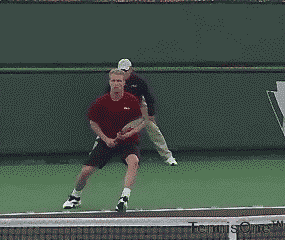
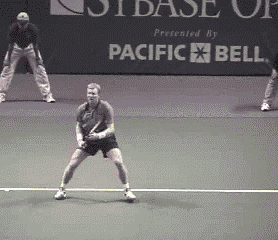
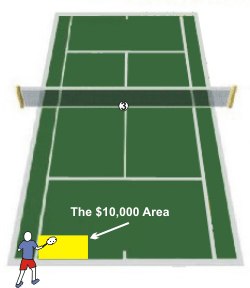 Technique Differences
Technique Differences 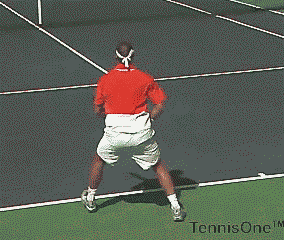
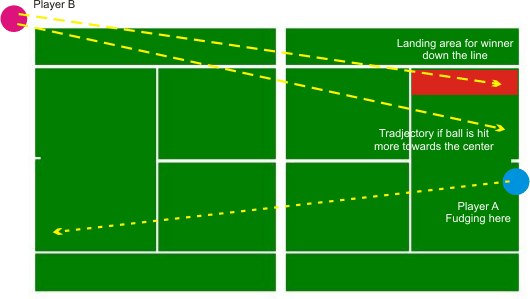
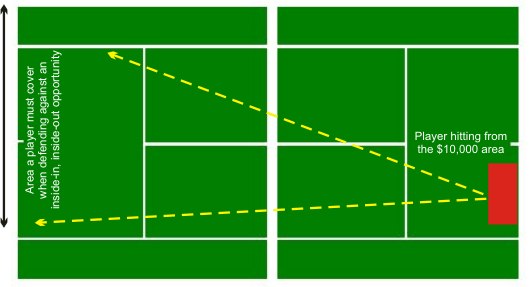
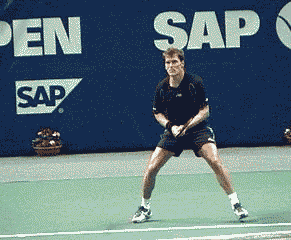
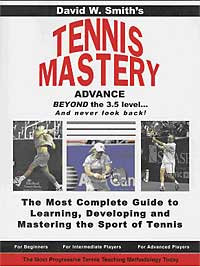 illions of tennis players stagnate at levels far below their potential?
illions of tennis players stagnate at levels far below their potential?  Join Dave Smith in an intimate, ultimate tennis camp: Desert Shadows Tennis Institute (DSTI) is an intense, 3-day camp that accepts only 12 players to work directly with Dave and his staff of certified and accomplished pros. Over 18 hours of tennis instruction is included along with a copy of Dave’s best-selling tennis book, TENNIS MASTERY, a DVD of instruction, breakfast and lunch each day, and a lifetime of tennis secrets!
Join Dave Smith in an intimate, ultimate tennis camp: Desert Shadows Tennis Institute (DSTI) is an intense, 3-day camp that accepts only 12 players to work directly with Dave and his staff of certified and accomplished pros. Over 18 hours of tennis instruction is included along with a copy of Dave’s best-selling tennis book, TENNIS MASTERY, a DVD of instruction, breakfast and lunch each day, and a lifetime of tennis secrets!